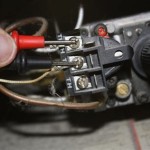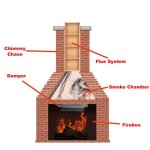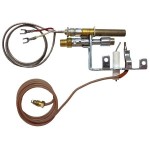Buck Fireplace Insert: A Comprehensive Overview
The Buck Fireplace Insert represents a prominent solution for homeowners seeking to enhance the efficiency and aesthetic appeal of their existing fireplaces. These inserts are designed to be installed directly into a pre-existing fireplace opening, transforming an often inefficient open fireplace into a powerful and controllable heat source. Buck Stove, the manufacturer, has cultivated a reputation for producing durable and reliable heating appliances, and their fireplace inserts are no exception. This article explores the key features, benefits, considerations, and models associated with Buck Fireplace Inserts, providing a thorough understanding of their capabilities and suitability for various heating needs.
Understanding the Purpose and Mechanics of a Fireplace Insert
Traditional open fireplaces, while aesthetically pleasing, are notoriously inefficient at heating a home. A significant portion of the heat generated by the fire escapes up the chimney, resulting in minimal warming of the surrounding room and considerable energy waste. A fireplace insert addresses this problem by creating a closed combustion system. The insert is a self-contained unit constructed of cast iron or steel, designed to fit snugly within the fireplace opening. This enclosed design allows for more controlled and complete combustion of the fuel, whether it be wood, gas, or pellets, extracting maximum heat with minimal waste.
The insert draws air from the room or an external source, heats it through the combustion process, and then radiates that heat back into the room. Some models incorporate a blower system, which further enhances heat circulation by forcing warm air out into the living space. This forced-air circulation provides a more even heating distribution and allows the insert to heat larger areas more effectively. The flue of the insert is typically connected to the existing chimney, but often requires a stainless steel liner to ensure proper venting and prevent creosote buildup. This liner is crucial for safety and optimal performance.
The efficiency of a fireplace insert is measured by its heating efficiency rating, which indicates the percentage of fuel energy that is converted into usable heat. Modern fireplace inserts, including those manufactured by Buck Stove, often boast efficiency ratings significantly higher than traditional open fireplaces, making them a considerably more cost-effective and environmentally responsible heating option.
Key Benefits of Choosing a Buck Fireplace Insert
Selecting a Buck Fireplace Insert offers numerous advantages over traditional fireplaces, addressing both heating efficiency and aesthetic considerations. These benefits extend beyond simple heat provision, impacting energy costs, environmental impact, and overall home comfort.
First and foremost, the increased heating efficiency translates directly into lower heating bills. By maximizing the heat extracted from the fuel and minimizing heat loss up the chimney, a Buck Fireplace Insert significantly reduces the amount of fuel required to heat a given space. This can lead to substantial savings over the course of a heating season, particularly in regions with long, cold winters. The ability to control the combustion rate also allows for more precise temperature regulation, further optimizing fuel consumption and preventing overheating.
Secondly, Buck Fireplace Inserts offer enhanced safety compared to open fireplaces. The enclosed design eliminates the risk of sparks or embers escaping into the room, reducing the likelihood of accidental fires. The controlled combustion process also minimizes the production of smoke and creosote, which can accumulate in the chimney and pose a fire hazard. Properly installed and maintained Buck Fireplace Inserts significantly reduce the risks associated with wood-burning heating.
Thirdly, these inserts enhance the aesthetic appeal of the fireplace. Buck Stove offers a variety of styles and finishes, allowing homeowners to choose an insert that complements their existing décor. From classic cast iron designs to more modern and streamlined models, there is a Buck Fireplace Insert to suit virtually any aesthetic preference. The inserts can also feature decorative panels, doors, and other embellishments, further enhancing their visual appeal and transforming the fireplace into a focal point of the room.
Finally, the environmental impact is reduced. By burning fuel more efficiently, Buck Fireplace Inserts produce fewer emissions than traditional open fireplaces. This contributes to cleaner air quality and reduces the overall carbon footprint of the home heating system. Many Buck Stove models are EPA-certified, meaning they meet stringent emission standards and are considered to be among the cleanest burning wood-burning appliances available.
Factors to Consider Before Purchasing a Buck Fireplace Insert
Before investing in a Buck Fireplace Insert, several factors should be carefully considered to ensure that the chosen model is appropriate for the specific heating needs and fireplace dimensions. These considerations include the size of the area to be heated, the dimensions of the existing fireplace opening, the type of fuel to be used, and the specific features desired.
The size of the area to be heated is a crucial factor in determining the appropriate BTU (British Thermal Unit) output of the insert. BTU is a measure of the amount of heat produced by the appliance. Buck Stove offers inserts with varying BTU outputs, ranging from smaller models suitable for heating individual rooms to larger models capable of heating entire homes. Consult a heating professional or use online sizing calculators to determine the appropriate BTU output for the space to be heated.
The dimensions of the existing fireplace opening must be accurately measured to ensure that the insert will fit properly. Buck Stove provides detailed specifications for each of its models, including the required minimum and maximum fireplace opening dimensions. Careful measurement is essential to avoid purchasing an insert that is either too large or too small for the fireplace. In some cases, minor modifications to the fireplace opening may be necessary to accommodate the insert.
The type of fuel to be used (wood, gas, or pellets) is another important consideration. Buck Stove manufactures inserts that are designed for use with specific fuel types. Wood-burning inserts are typically the most common, but gas and pellet inserts offer the convenience of automatic ignition and temperature control. The choice of fuel will depend on factors such as fuel availability, cost, and personal preference. It is important to note that gas and pellet inserts often require a separate venting system and gas or electrical connections.
Finally, consider the specific features desired. Buck Stove offers inserts with a variety of features, such as blowers, thermostats, remote controls, and decorative options. Blowers enhance heat circulation, while thermostats allow for precise temperature control. Remote controls provide added convenience, and decorative options allow for customization of the insert's appearance. Weigh the cost and benefits of these features to determine which ones are most important for the specific heating needs and preferences.
Popular Buck Fireplace Insert Models and Their Features
Buck Stove offers a diverse range of fireplace insert models to cater to varying heating requirements and aesthetic preferences. Some of the more popular models and their key features include:
The Model 21ZC: This is a popular wood-burning insert known for its efficiency and heating capacity. It typically features a large firebox, allowing for longer burn times and less frequent refueling. Many configurations have blower systems to enhance heat distribution. Its robust construction and efficient combustion system make it a reliable and cost-effective heating solution.
The Model 81 Gas Insert: This gas insert offers the convenience of automatic ignition and temperature control. It typically features a realistic flame pattern and a variety of decorative options. Gas inserts are a clean and efficient heating option, requiring minimal maintenance and offering precise temperature regulation.
The Model 91 Wood Pellet Insert: This pellet insert offers a balance of efficiency and convenience. It burns wood pellets, which are a renewable and readily available fuel source. Pellet inserts typically feature automatic ignition and temperature control, as well as a hopper that holds a supply of pellets. These provide consistent heat output and require minimal manual operation.
Each of these models, and others within the Buck Stove lineup, are designed with specific features and benefits to address various heating needs and preferences. It is recommended to consult with a qualified dealer to determine the most appropriate model for specific circumstances.
Installation and Maintenance of a Buck Fireplace Insert
Proper installation and regular maintenance are crucial for ensuring the safe and efficient operation of a Buck Fireplace Insert. Installation should be performed by a qualified professional to ensure that the insert is properly connected to the chimney and that all safety requirements are met. Maintenance involves regular cleaning and inspection to prevent creosote buildup and ensure optimal performance.
Installation typically involves several steps, including preparing the fireplace opening, installing a stainless steel chimney liner, connecting the insert to the liner, and sealing the insert to the fireplace opening. The chimney liner is essential for preventing creosote buildup and ensuring proper venting of combustion gases. The liner should be properly sized and installed according to local building codes and manufacturer's instructions.
Regular cleaning is essential for preventing creosote buildup in the chimney and insert. Creosote is a flammable substance that can accumulate in the chimney and pose a fire hazard. The chimney should be inspected and cleaned at least once a year, or more frequently if the insert is used heavily. The insert itself should also be cleaned regularly to remove ash and other debris. Following the manufacturer's recommendations for cleaning and maintenance will help to ensure the longevity and safe operation of the insert.
In addition to regular cleaning, the insert should be inspected periodically for any signs of damage or wear. Check the door seals, gaskets, and other components for cracks or leaks. Replace any worn or damaged parts promptly to prevent air leaks and maintain optimal performance. A well-maintained Buck Fireplace Insert will provide years of reliable and efficient heating.

Buck 81 Fireplace Insert Hechler S Mainstreet Hearth Home Troy Missouri

Buck Stove Model 91 Insert Fireplace Buy Hearth Patio

Buck Model 21 Non Catalytic Wood Burning Insert At Obadiah S Woodstoves

Buck Stove Model 21 Insert Steel Fireplaces Inserts Hearth Patio

Buck Stove Model 81 Wood Fireplace Insert With Black Door 1 600 To 2 700 Sq Ft At Tractor Supply Co
Help Please With Buck Stove Hearth Com Forums Home

Buck Stoves

Buck Wood Stove Review New Vs Old Models

Buck Stove Model 74 Wood

Buck Stoves
Related Posts








